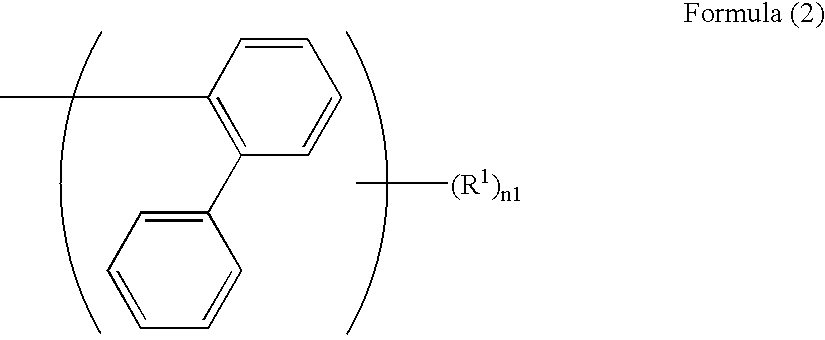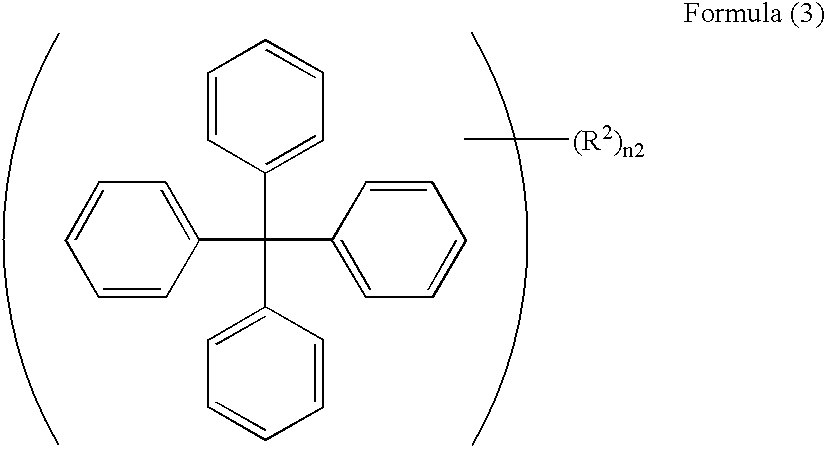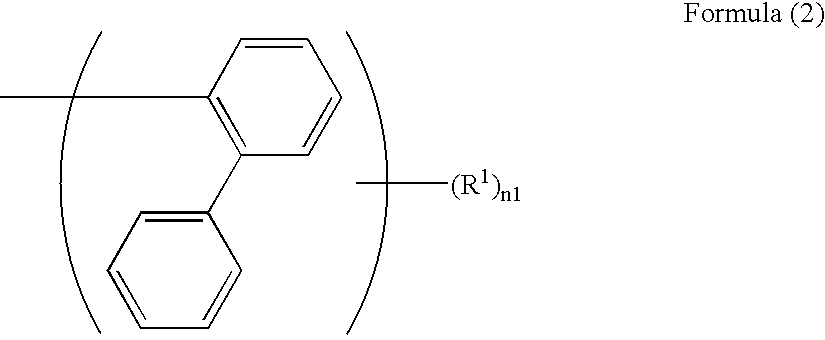Light emitting device
a technology of light-emitting devices and light-emitting devices, which is applied in the direction of discharge tube luminescnet screens, other domestic articles, natural mineral layered products, etc., can solve the problems of reducing luminous efficiency, low luminous efficiency, and low luminous efficiency, and achieve high efficiency, and high luminance and luminous efficiency
- Summary
- Abstract
- Description
- Claims
- Application Information
AI Technical Summary
Benefits of technology
Problems solved by technology
Method used
Image
Examples
example 1
[0125] A glass sheet of 0.5 mm in thickness and 2.5 cm in square was used as a substrate. This substrate was introduced into a vacuum chamber, and an ITO thin film (thickness: 0.2 μm) was formed as a transparent electrode using an ITO target (indium / tin=95 / 5 by mole) having an SnO2 content of 10% by weight by means of DC magnetron sputtering (condition: substrate temperature of 250° C. and oxygen pressure of 1×10−3 Pa). The ITO thin film had a surface resistance of 10 Ω / □.
[0126] Next, the substrate having the transparent electrode formed thereon was charged in a cleaning vessel, cleaned with IPA, and then subjected to UV-ozone processing for 30 minutes.
[0127] A hole injection layer was provided in a thickness of 0.01 μm on the transparent electrode by vapor deposition of copper phthalocyanine by the vacuum vapor deposition process at a rate of 1 nm / sec. A hole transport layer was provided in a thickness of 0.03 μm on the hole injection layer by vapor deposition of N,N′-dinaphthyl-...
example 2
[0143] A device was prepared and evaluated in the same manners as in Example 1, except that in Example 1, Compound (4) was used as the electrically inactive organic compound to be used in the light emitting layer in place of the Compound (1). The results obtained are shown in Tables 1 and 2.
example 3
[0144] A device was prepared and evaluated in the same manners as in Example 1, except that in Example 1, Compound (11) was used as the electrically inactive organic compound to be used in the light emitting layer in place of the Compound (1). The results obtained are shown in Tables 1 and 2.
PUM
| Property | Measurement | Unit |
|---|---|---|
| Energy | aaaaa | aaaaa |
| Ionization potential | aaaaa | aaaaa |
| Volume | aaaaa | aaaaa |
Abstract
Description
Claims
Application Information
 Login to View More
Login to View More - R&D
- Intellectual Property
- Life Sciences
- Materials
- Tech Scout
- Unparalleled Data Quality
- Higher Quality Content
- 60% Fewer Hallucinations
Browse by: Latest US Patents, China's latest patents, Technical Efficacy Thesaurus, Application Domain, Technology Topic, Popular Technical Reports.
© 2025 PatSnap. All rights reserved.Legal|Privacy policy|Modern Slavery Act Transparency Statement|Sitemap|About US| Contact US: help@patsnap.com



